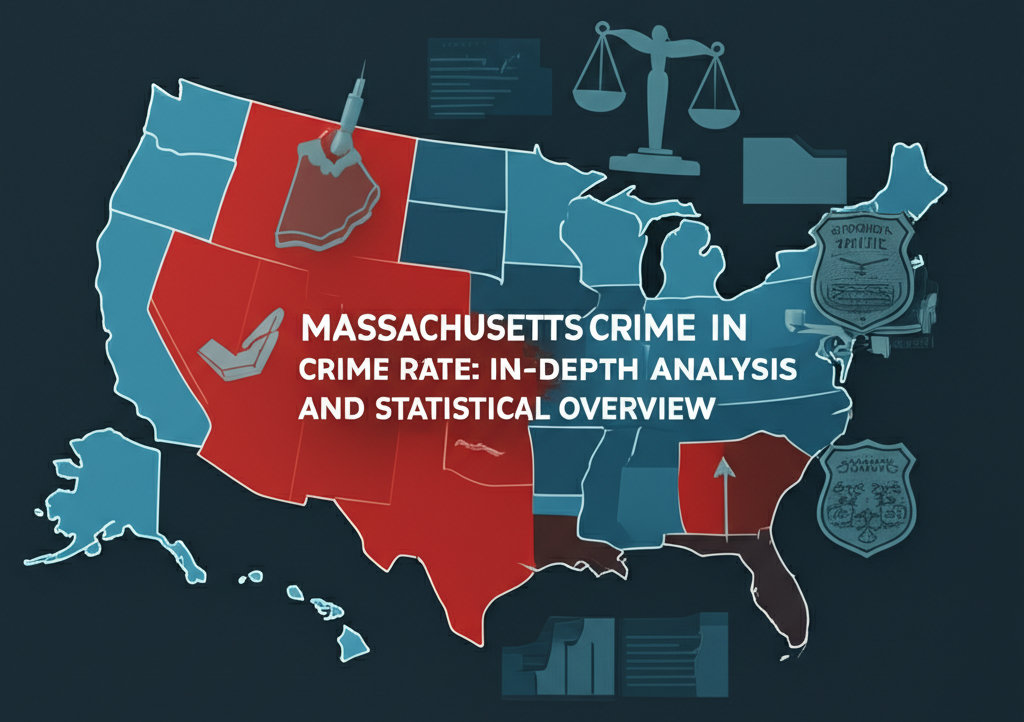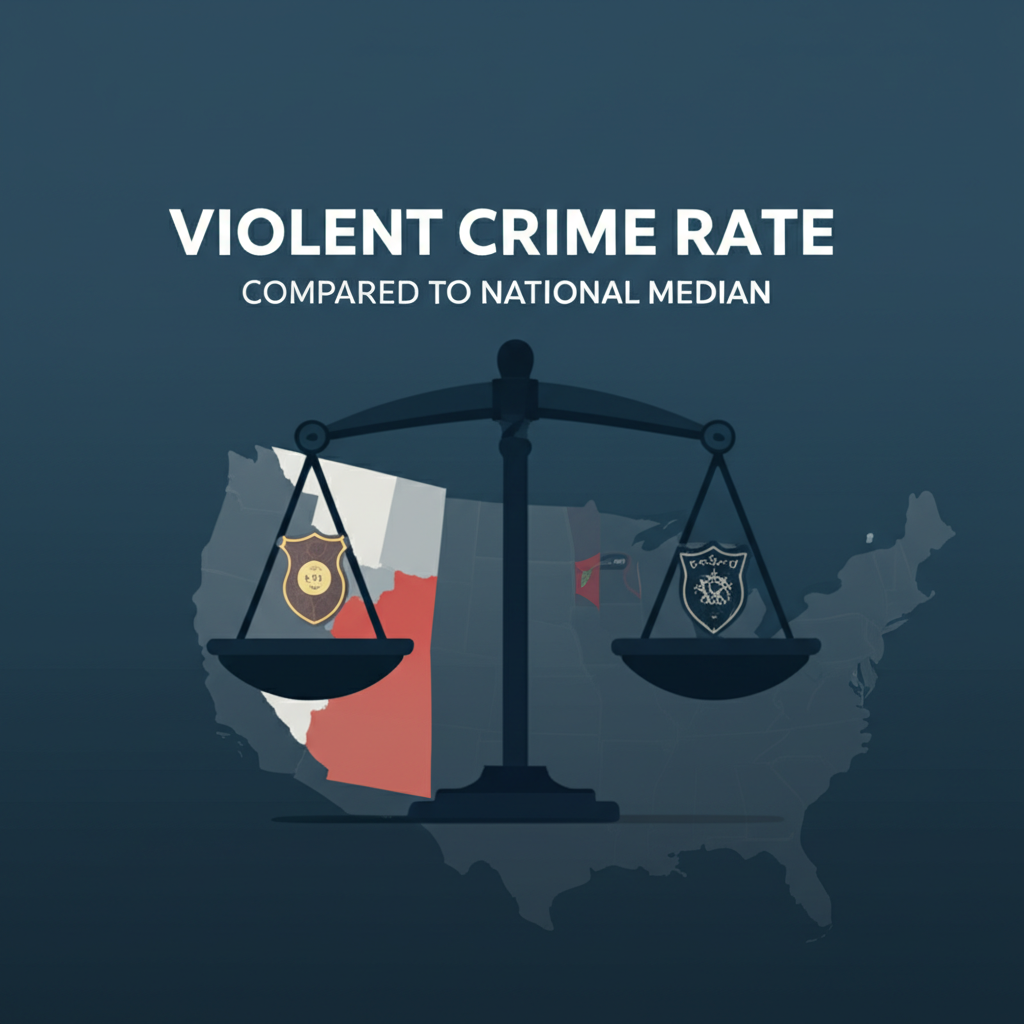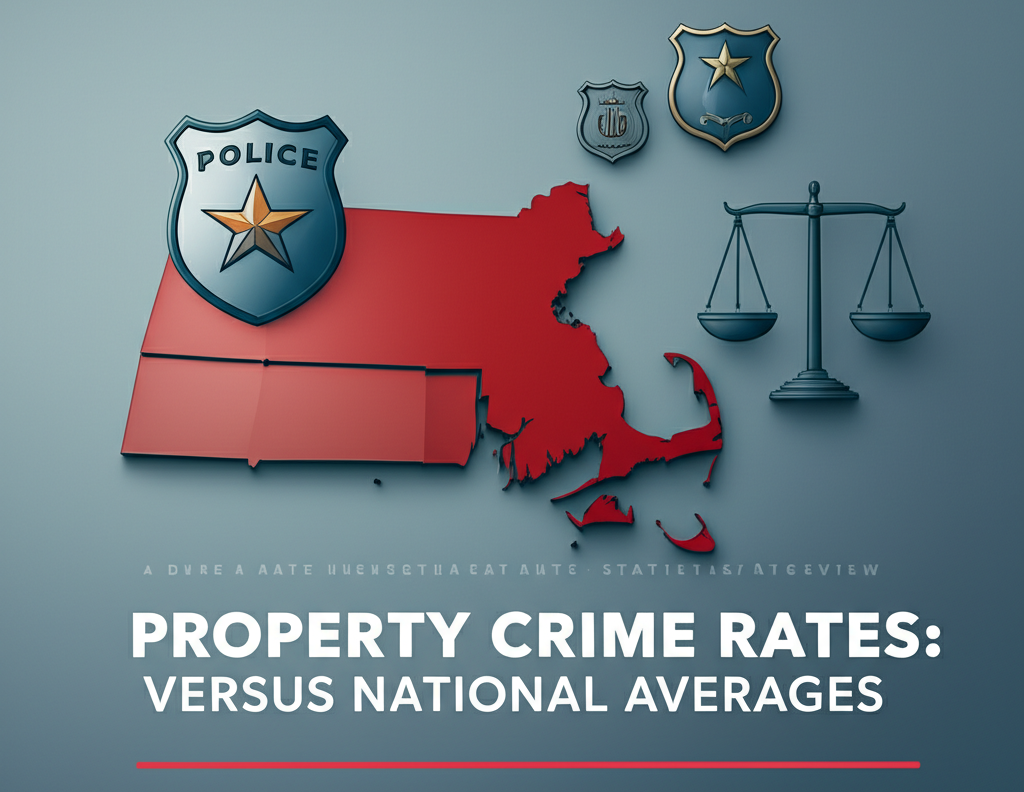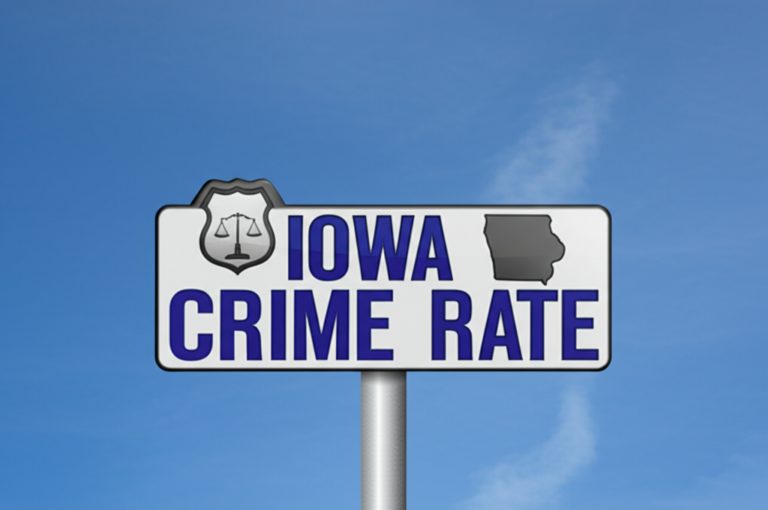Massachusetts Crime Rate: In-Depth Analysis and Statistical Overview
Massachusetts is known for its strong commitment to ensuring public safety and justice through effective law enforcement and legal frameworks. The study of criminology in this state provides valuable insights into various social issues linked to crime. By examining crime statistics, authorities and researchers can better understand the patterns and trends that influence criminal justice approaches. This understanding is essential for developing policies that promote public safety and facilitate appropriate legal action against offenders.

In Massachusetts, the focus extends beyond just measuring the number of incidents; it also involves analyzing the deeper connections between law, society, and preventive measures. Comprehensive knowledge of different crime types, including those categorized under violent and property-related offenses, supports the state’s efforts in maintaining a safer environment for its residents.
- Massachusetts shows a crime rate below the national median, suggesting a relatively safer environment.
- Crime data includes violent and property crimes, critical for law enforcement strategies and public safety.
- Understanding these crime types aids criminology research and social policy development.
Comprehensive Crime Statistics in Massachusetts
In Massachusetts, monitoring crime statistics plays a crucial role in guiding public safety initiatives and ensuring effective legal action. For the recent reporting period, over 99,000 crimes were officially documented across the state. Among these, violent crime accounted for roughly 22,000 cases, which is significantly less compared to property offenses.
The dominance of property crime is evident, with around 77,000 incidents including thefts and burglaries. These figures highlight where resources and attention must be directed to uphold justice and safety for the community. The available data outlines the distribution and severity of offenses, allowing agencies to tailor specific crime-fighting strategies suitably. Such comprehensive crime reporting supports transparency and promotes collaborative efforts between law enforcement bodies and the public.
- Total crimes reported amount to over 99,000 cases.
- Violent crimes constitute a smaller fraction with roughly 22,000 incidents.
- Property crimes dominate the statistics with approximately 77,000 cases.
| Crime Category | Total Cases Reported | Rate per 1,000 Residents |
|---|---|---|
| Total Crimes Reported | 99,065 | 14.15 |
| Violent Crime | 21,998 | 3.14 |
| Property Crime | 77,067 | 11.01 |
Detailed Violent Crime Breakdown

Looking deeper into the nature of violent crime in Massachusetts reveals a varied pattern. Assault emerges as the most frequently reported violent offense, far outweighing other categories. Incidents of robbery and rape occur less often but remain significant due to their severe impact on victims and society. The gravest crime, murder, is thankfully rare and represents the lowest rate among violent offences. This hierarchical understanding allows law enforcement and policymakers to allocate resources more effectively, focusing preventive and responsive efforts where they are most needed.
Addressing these crimes requires a careful balance of enforcement and community engagement to promote safety without compromising civil liberties. Detailed crime statistics with such granularity contribute immensely to crafting legal and social interventions that reflect the reality on the ground.
- Assault is the most reported violent crime in Massachusetts.
- Robbery and rape have significantly lower rates compared to assault.
- Murder remains very rare with the lowest incident rate among violent crimes.
| Violent Crime Type | Reported Incidents | Rate per 1,000 Residents |
|---|---|---|
| Murder | 146 | 0.02 |
| Rape | 1,910 | 0.27 |
| Robbery | 2,560 | 0.37 |
| Assault | 17,382 | 2.48 |
Violent Crime Rate Compared to National Median

When comparing Massachusetts to the broader United States, it becomes apparent that the state enjoys a lower rate of violent crime than the national median. Residents face about a 1 in 318 chance of experiencing a violent crime, reflecting well on the state’s public safety efforts. This comparatively lower exposure to serious offenses underscores the effectiveness of local law enforcement and social policies aimed at crime reduction.
By reviewing such crime statistics, policymakers can appreciate the success of their strategies while also identifying areas needing improvement. Researchers interested in national security and crime comparisons often turn to these figures to understand regional disparities and trends across the United States. For more detailed information, the FBI’s Uniform Crime Reporting program offers extensive data accessible through their official website.
- Massachusetts has a lower violent crime rate than the national median.
- The risk of violent crime victimization is about 1 in 318 residents.
- Lower rates reflect effective law enforcement and social policies.
| Crime Type | Massachusetts Rate | National Median Rate |
|---|---|---|
| Violent Crime | 3.14 | 4.0 |
| Murder | 0.02 | 0.06 |
| Rape | 0.27 | 0.38 |
| Robbery | 0.37 | 0.67 |
| Assault | 2.48 | 2.64 |
Insights into Property Crime Statistics

Examining property crime in Massachusetts reveals that theft is by far the most common type, significantly contributing to overall criminal activity. Other property theft categories, such as burglary and motor vehicle theft, are less frequent but still notable due to their impact on victims’ sense of security. The probability of becoming a victim of property crime in this state stands at roughly 1 in 91, highlighting the need for robust security measures and community awareness. These crime statistics inform prevention strategies and support the enforcement of relevant criminal law. Understanding the specific nature of property-related offenses allows authorities to better tailor interventions and resources, improving overall public safety.
- Theft is the most prevalent property crime in Massachusetts.
- Burglary and motor vehicle theft have lower but notable rates.
- There is approximately a 1 in 91 chance to be a victim of property crime in the state.
| Property Crime Type | Reported Incidents | Rate per 1,000 Residents |
|---|---|---|
| Burglary | 9,231 | 1.32 |
| Theft | 59,672 | 8.52 |
| Motor Vehicle Theft | 8,164 | 1.17 |
Massachusetts Property Crime Rates Versus National Averages

Compared to the rest of the country, Massachusetts reports significantly lower rates of property crime. This suggests that local efforts in crime prevention and enforcement have been effective in curbing incidents like burglary, theft, and motor vehicle theft. Lower crime rates not only improve the perception of safety but also contribute to stronger community bonds and higher quality of life. These comparisons are invaluable for shaping future policies and allocating resources more efficiently. Further detailed data on nationwide crime trends and their implications can be found through the Bureau of Justice Statistics, which offers extensive research reports online.
- Massachusetts property crime rates are markedly lower than the U.S. median.
- This lowering indicates stronger property crime prevention and enforcement in the state.
| Property Crime Type | Massachusetts Rate | National Median Rate |
|---|---|---|
| Burglary | 1.32 | 2.51 |
| Theft | 8.52 | 13.47 |
| Motor Vehicle Theft | 1.17 | 3.19 |
Crime Density in Massachusetts

When considering crime density, Massachusetts records about 19 crimes per square mile, which is noticeably less than the national figure of 26.5. Such lower density correlates with state-specific patterns of urbanization and population distribution. This spatial perspective is crucial for law enforcement agencies as it guides the placement of resources and patrols, aiming for maximum efficiency in maintaining public safety. The clarity on crime density also aids criminologists and policymakers in understanding how geographic and demographic factors influence crime rate. Ultimately, this knowledge supports crafting tailored approaches that address safety concerns of both urban and rural communities within Massachusetts.
- Massachusetts reports 19 crimes per square mile, considerably lower than the national median of 26.5.
- Lower crime density aligns with demographic and urbanization characteristics of the state.
- This data assists in targeted law enforcement resource allocation.
| Location | Crimes per Square Mile |
|---|---|
| Massachusetts | 19 |
| National Median | 26.5 |
Top Safest Cities in Massachusetts

Some cities in Massachusetts stand out as exceptionally safe, fostering environments where residents generally feel secure. Hinsdale ranks highest among these, reflecting consistently low crime occurrence and strong community safety measures. Other cities including Groveland, Peru – Windsor, and Clinton also demonstrate notable crime prevention success. These places benefit from robust crime prevention strategies often supported by active local social institutions. Such communities provide valuable examples for understanding how collaborative efforts between citizens and law enforcement agencies contribute to safer living spaces. Recognizing and promoting safe cities encourages ongoing investment in protective measures and fosters a statewide culture prioritizing public safety.
- Hinsdale ranks as the safest city in Massachusetts.
- Other notably safe cities include Groveland, Peru – Windsor, and Clinton.
- These cities consistently show low crime rates, reinforcing community safety.
| Rank | City |
|---|---|
| 1 | Hinsdale |
| 2 | Groveland |
| 3 | Peru – Windsor |
| 4 | Clinton |
| 5 | Royalston |
| 6 | Northborough |
| 7 | Millis |
| 8 | Savoy – Florida |
| 9 | Blackstone |
| 10 | Boxford |
Popular Cities and Crime Data Overview

Massachusetts is home to several popular urban centers that contrast in terms of crime exposure and safety profiles. Cities such as Boston, Cambridge, and Springfield attract a dense population and thus become focal points for law enforcement attention. Other notable cities include Worcester, Lowell, and New Bedford. These areas present diverse challenges in managing urban crime and require tailored approaches for effective control. Although specific crime statistics for these cities are not provided here, their role in the overall crime landscape of Massachusetts is significant. Understanding crime dynamics in such metropolitan areas is key for social research and helps demographics organizations develop informed programs to serve local populations better.
- Popular cities in Massachusetts vary widely in crime rate exposure.
- Key urban centers include Boston, Cambridge, Springfield, and Worcester.
- These areas are focal points for law enforcement due to population density.
| City | Crime Data Availability |
|---|---|
| Boston | [city_crime_row city=”Boston” state=”Massachusetts”] |
| Brockton | [city_crime_row city=”Brockton” state=”Massachusetts”] |
| Cambridge | [city_crime_row city=”Cambridge” state=”Massachusetts”] |
| Fall River | [city_crime_row city=”Fall River” state=”Massachusetts”] |
| Framingham | [city_crime_row city=”Framingham” state=”Massachusetts”] |
| Haverhill | [city_crime_row city=”Haverhill” state=”Massachusetts”] |
| Lawrence | [city_crime_row city=”Lawrence” state=”Massachusetts”] |
| Lowell | [city_crime_row city=”Lowell” state=”Massachusetts”] |
| Lynn | [city_crime_row city=”Lynn” state=”Massachusetts”] |
| New Bedford | [city_crime_row city=”New Bedford” state=”Massachusetts”] |
| Newton | [city_crime_row city=”Newton” state=”Massachusetts”] |
| Quincy | [city_crime_row city=”Quincy” state=”Massachusetts”] |
| Somerville | [city_crime_row city=”Somerville” state=”Massachusetts”] |
| Springfield | [city_crime_row city=”Springfield” state=”Massachusetts”] |
| Worcester | [city_crime_row city=”Worcester” state=”Massachusetts”] |
Crime Data Collection and Reporting Methodology

Accurate crime data is indispensable for creating effective safety policies. In the United States, data collection involves cooperation from over 18,000 local law enforcement agencies, making the dataset comprehensive and reliable. To handle possible gaps, errors, and inconsistencies in reporting, a meta-analysis of approximately 9.4 million crimes is conducted. This extensive review incorporates more than 2 million geographically coded points, enhancing spatial accuracy and relevance.
The statistics represent the most recent full calendar period available, ensuring findings remain timely for study and policy formulation. As a result, this approach supports criminological research and enables authorities to maintain clear oversight of crime trends over time. Interested readers may find more information and ongoing updates from official sources such as the Bureau of Justice Statistics.
- Data is sourced from over 18,000 local law enforcement agencies in the U.S.
- A meta-analysis of 9.4 million crimes improves accuracy and accounts for reporting inconsistencies.
- The dataset covers the most recent full calendar period available, ensuring relevance.
Conclusion
In conclusion, the in-depth analysis of Massachusetts’ crime rate reveals a complex interplay between various factors including violent crime, property crime, and law enforcement efforts. The state’s crime statistics, particularly in areas such as assault, theft, and burglary, underscore the importance of continued vigilance and innovative strategies in criminal justice and public safety. Massachusetts’ success in maintaining crime rates below the national median highlights the effectiveness of its legal frameworks and social policies.
However, the presence of hate crimes, sexual assault, and drug-related crimes calls for a renewed focus on addressing these specific issues. The data presented not only serves as a testament to the state’s achievements but also as a roadmap for future initiatives aimed at further reducing crime and enhancing the quality of life for all residents. By leveraging criminology research and fostering collaboration between law enforcement and the community, Massachusetts can continue to lead in the realm of public safety and justice.




